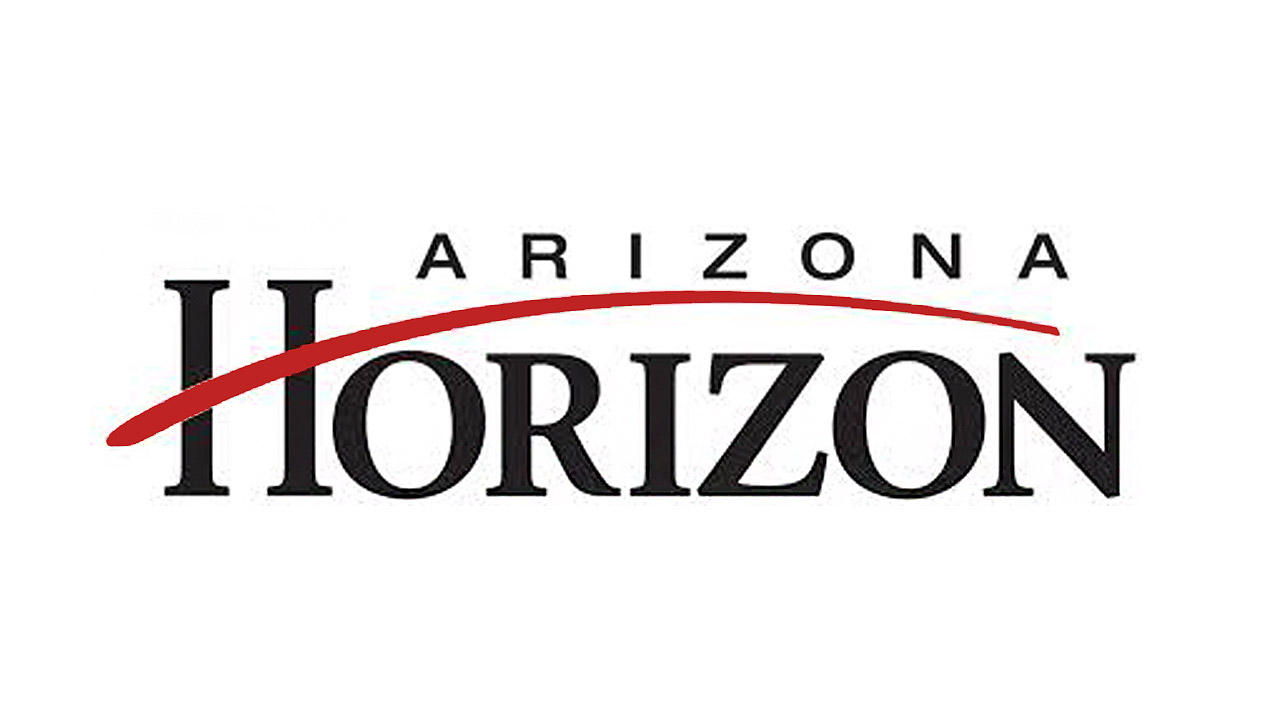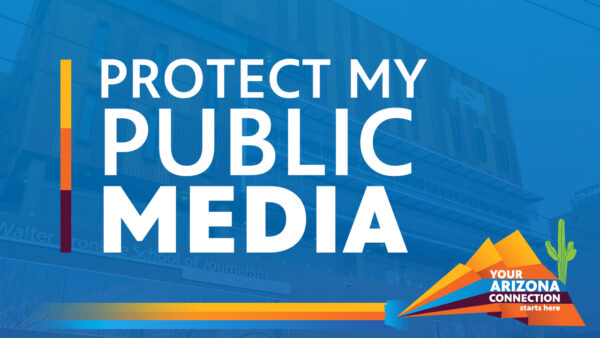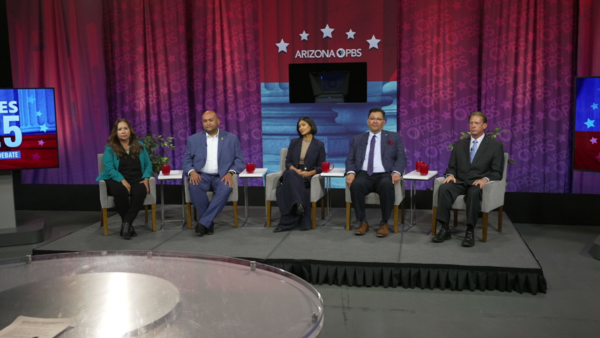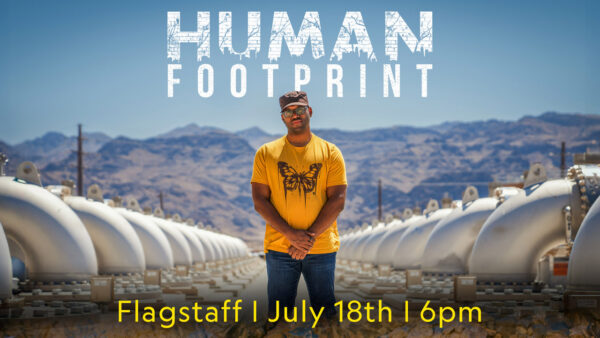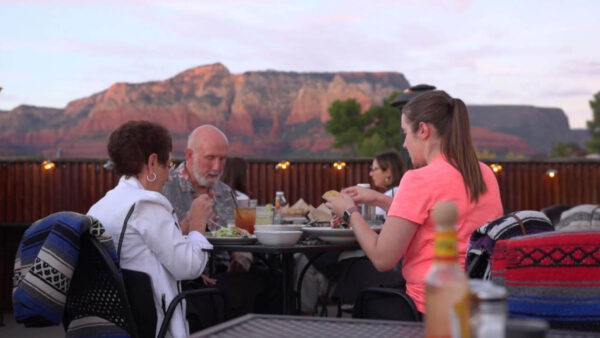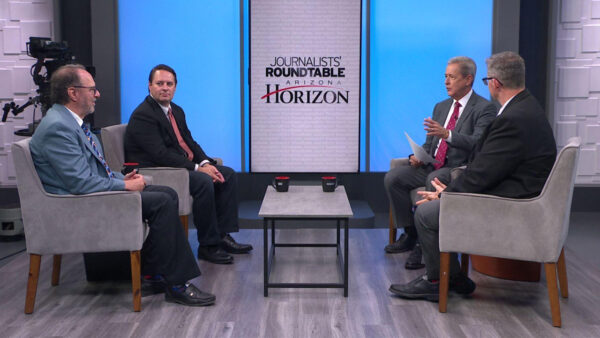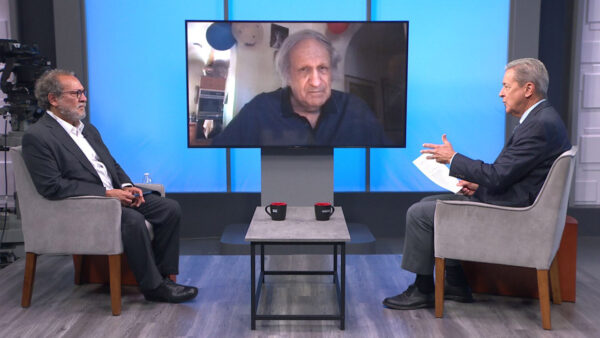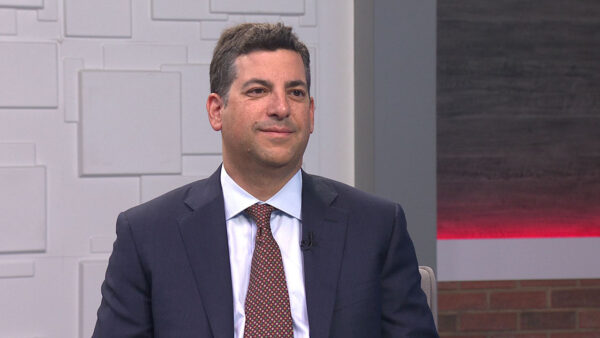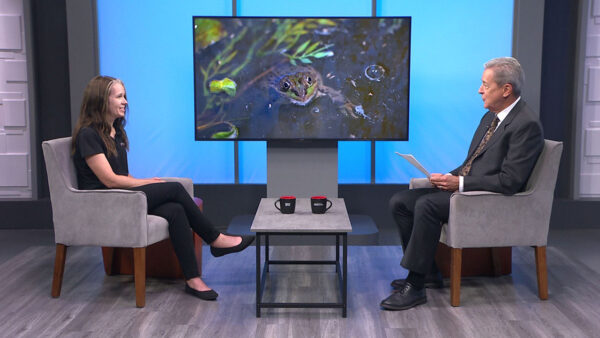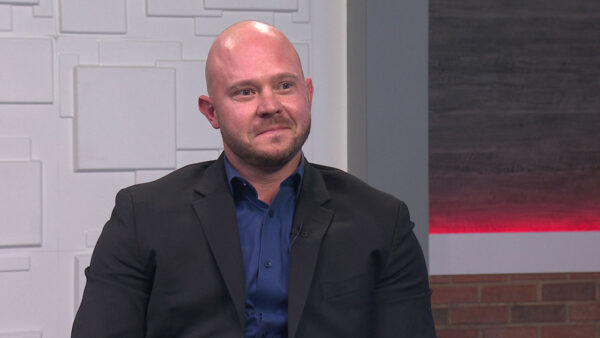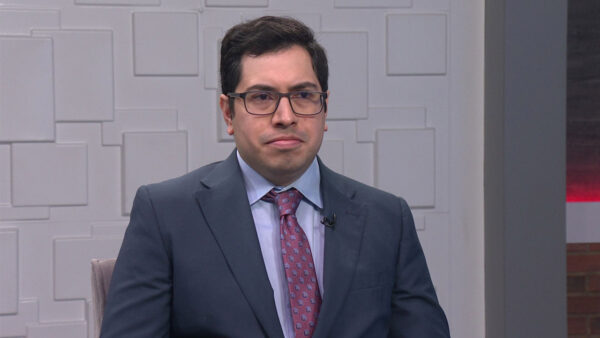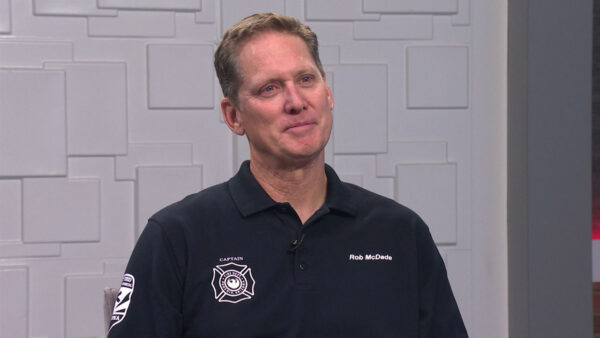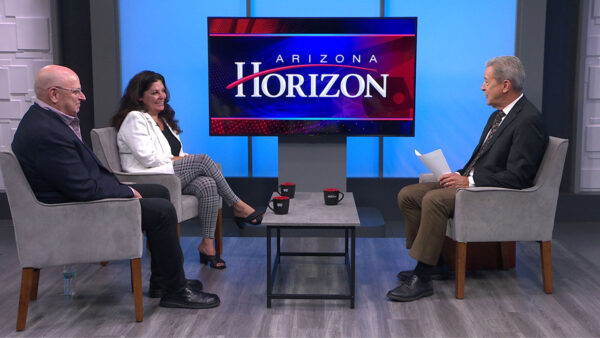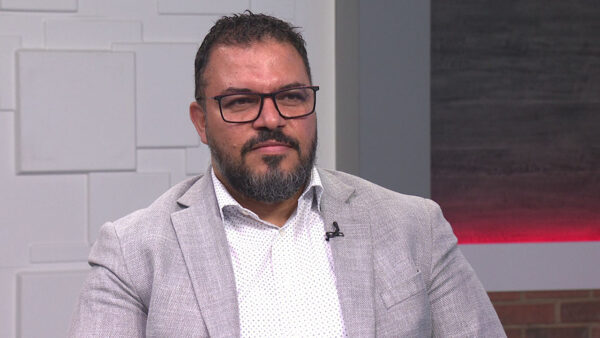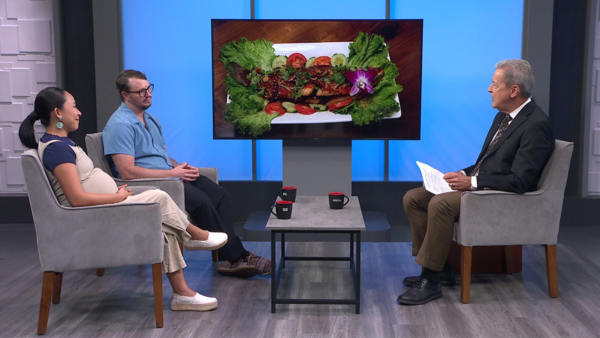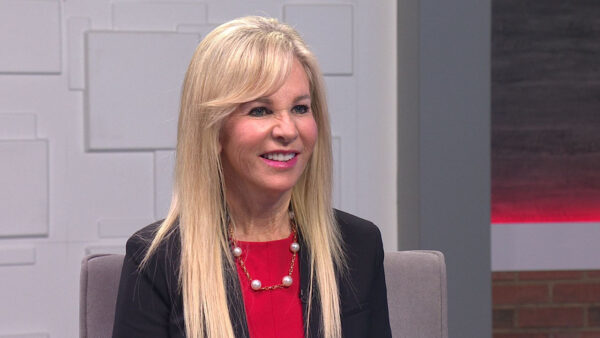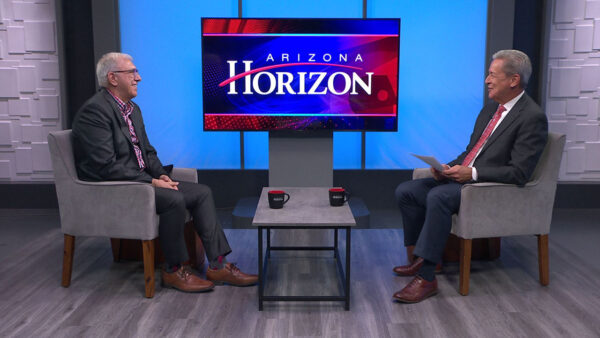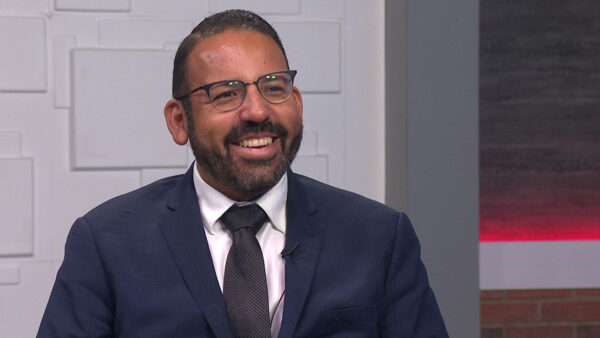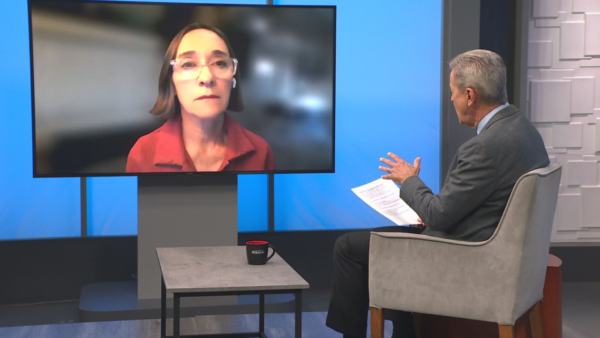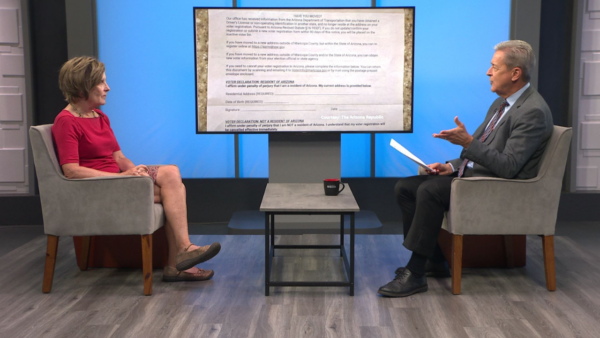The University of Arizona is celebrating the opening of its College of Medicine-Phoenix located on the Biomedical Campus here in the Valley. Find out about the school and its partnership with Arizona State University and the Translational Genomics Research Institute (TGen).
Michael Grant:
Tonight on Horizon, it has been years in the planning. The University of Arizona College of Medicine-Phoenix in collaboration with Arizona State University holds its grand opening today. Plus, William Shakespeare's comedy twelfth night, produced by Arizona Theatre Company, plays at the Herberger theatre center. Those stories next on Horizon.
Announcer:
Horizon is made possible by contributions from the friends of 8. Members of your Arizona PBS Station. Thank you.
Michael Grant:
Good evening. Welcome to Horizon. I'm Michael Grant. Mesa Republican State Representative Russell Pearce, apologizing for emailing an article from a white separatist group to his supporters. Pearce says he did not read the entire article from the national alliance's web site, was not aware of what the group represents and didn't realize the article contains racist and anti-Semitic statements. Pearce says that he does not agree with the views of the article and immediately sent out two apologies for attaching it to the email to his supporters.
Michael Grant:
Arizona Attorney General Terry Goddard says he is going to file an emergency appeal with the U.S. Supreme Court to try to restore the requirement that voters show identification at the polls. An injunction issued last week by the 9th U.S. circuit court of appeals bars the state from enforcing voter-approved proposition 200. That measure requires voters to show a government-issued picture I.D. or two other forms of identification at the polls. If the Supreme Court refuses to hear Goddard's appeal, voters won't have to show id at the polls for November's General Election.
Michael Grant:
The University of Arizona College of Medicine launched a regional campus in Phoenix in 1992. Since then, about a third of its third and fourth-year medical students came from Tucson to do their in training in Phoenix. Now med students can do all four years of their training at the University of Arizona College of Medicine-Phoenix in collaboration with Arizona State University, it had its grand opening today. The school lays the foundation for the Phoenix biomedical campus, under development. In a moment more on that and the impact of training more doctors in our state.
Michael Grant:
First, Merry Lucero looks at the campus.
Merry Lucero:
The Circa 1910 historic Phoenix Union High School buildings at 7th street and Van Buren now make up the campus of a state of the art medical education facility. The University of Arizona College of Medical Phoenix in collaboration with Arizona State University.
Dr. Jacqueline Chadwick:
This particular project started about three years ago when the president signed a memorandum of understanding, the presidents of U of A, and ASU, and the board of regence to really look at something different, something collaborative. And they decided to establish an expanded college of medicine, so not just the third and fourth years could be trained here, but all four years of medical school could be done in Phoenix. And we decided to do that in somewhat of a unique way in the nation in that it's collaboration between the existing University of Arizona College of Medicine and Arizona State University, in addition to all of our clinical partners.
Merry Lucero:
The old buildings are reenergized with innovative medical education technology.
Dr. Jacqueline Chadwick: It's almost a paradox; that we renovated the old buildings keeping many of the features of them. The beautiful high windows, the staircases, it's a gorgeous facility, but as you can see we're in a mediated classroom here which is state-of-the-art. So our students will be able to participate in all of the technology that medical education is using today.
Merry Lucero:
Another new technology, the computerized digital library. The classrooms are structured for small learning groups.
Dr. Jacqueline Chadwick:
Much of the way we teach today is not in the large classroom anymore. It's in small groups where they can learn how to interact with people and interact with technology. In addition the simulation center will be in that building.
CPR demonstrator:
What do you see on your baby? Give me a visual assessment.
Merry Lucero:
Medical students of the 21st century learn to do exams on state-of-the-art medical simulators.
Dr. Jacqueline Chadwick:
Medical education is finally catching up to the airline industry where pilots learn on simulation, astronauts learn on simulation and really medical education is now saying we really need to take advantage of that. So we will have a simulation center here with manikins and all kinds of technology to let the students learn on that as well.
Merry Lucero:
The central structure is the showcase building.
Dr. Jacqueline Chadwick:
It's the old auditorium for Phoenix Union High School and all of our mediated classrooms will be in here so the students, very short distance, can come here. We can have auditorium that will seat about 350 to 400 people for large audience participation, public events, big meetings.
Merry Lucero:
There are 90 third and fourth year med students already attending school here. Next July, two dozen first-year students will begin.
Michael Grant:
Joining me now to talk about the new medical college is the Dean of that college, Dr. Keith Joiner, and Kathleen Matt is also here, ASU Assistant Vice President for research. She is also director of the ASU Office of Clinical Partnership. Been kind of a busy day for both of you.
Keith Joiner:
Very busy, but very rewarding.
Michael Grant:
I'd imagine so, you know Keith, I didn't realize that the U of A had had a presence here for the past 14 years, I guess.
Keith Joiner:
That's right. We've had a portion of our third and fourth year students coming down here for their clinical rotations which is the way that traditional medical school curriculum is set up, where in the first two years you do your basic science training and then in the last two years you spend your time in hospitals and clinics. So we've had an increasing percentage of our class actually coming down here. So now, as you said, it's a third of the class that comes down and rotates at nine different sites in Phoenix.
Michael Grant:
Now compare and contrast that to what is going to be happening next year.
Keith Joiner:
Well, we're enrolling our first class of students in this four-year program next summer. And the first class will have 24 students and they will spend their entire four years in Phoenix. And the curriculum that has been designed through a process that has been very heavily collaborative with ASU and other constituencies will begin and end really in Phoenix.
Michael Grant:
Kathy, how does--talk more about how ASU fits into this overall picture.
Kathleen Matt:
Well ASU as Keith already indicated, the curriculum that is being developed is very much a blend taken from the various faculties coming forward, so from U of A and ASU. So many ASU faculty are trained in the biomedical area and their research is in the biomedical area. And so what this affords us an opportunity is by partnering with U of A, then our faculty in collaboration with U of A can then have the opportunity to develop a new curriculum and have an opportunity to teach in a medical school venue, which is really quite exciting.
Michael Grant:
So for example, some of these faculty have been teaching on the ASU campus--
Kathleen Matt:
Right.
Michael Grant:
In different colleges?
Kathleen Matt:
Yes, so many of our faculty at ASU already teach in school of life sciences and they could teach physiology, they teach neuroscience, they teach molecular biology. They might teach bioengineering, they might teach bioinformatics and so there as a part of the partnership then, there for some of these faculty and there about 12 faculty from ASU right now and will be continuing to recruit more as we recruit more from U of A. These faculty, their teaching assignments will be then at the medical school and they will teach there.
Michael Grant: Now what's the faculty presence then from U of A?
Keith Joiner:
We have recruited seven full-time faculty at this point and we're involving a lot of faculty from Tucson in ways that are sort of individualized in terms of their participation. And then we have an enormous cadre of volunteer faculty that have been teaching our third and fourth year students in Phoenix who will be engaged in substantial numbers in this curriculum and that's still a work in progress.
Michael Grant:
Okay.
Kathleen Matt:
I mean, in many ways the development of the curriculum allows us to take advantage of an expertise that has been here and individuals willing to teach and already doing research in these areas and then actually giving them an opportunity and this includes the clinical people as well as the basic scientists.
Michael Grant:
I realize doctors don't get into this stuff. But are you envisioning any sort of tense moments next weekend when the ASU and U of A game goes or not?
Keith Joiner:
I actually don't think so. I have to say my youngest son is a senior at ASU. And he has served to keep the lid on that within our own family.
Michael Grant:
I got you. Now ASU's College of Nursing has moved downtown.
Kathleen Matt:
Yes.
Michael Grant:
It would seem to me that there's obviously some possibilities there as well.
Kathleen Matt: Absolutely. And so Keith mentioned earlier the medical school is in the center of this Phoenix Biomedical campus and so in addition there are other programs that will join that. So ASU now has a downtown presence as well, school of nursing is there, social work is there, communications. There's a number of different ones, and NAU will be doing an allied health piece. And so again, this Phoenix biomedical campus it gives us an opportunity to interplay and interlays all of these various pieces. So one of the themes that also runs through our curriculum is interprofessional. The idea that you train physicians and nurses and healthcare providers and technicians and that they interface in the educational field before they wind up working on a floor together in a hospital or serving in a patient's needs, and so again the idea of promoting teamwork together to produce the best healthcare.
Keith Joiner:
And just to add to that, the University of Arizona College of Pharmacy will be on this site. And as Kathy has alluded to the notion of working in teams and team-based care is really been embraced now, nationally. It's easier said than done and we have the opportunity here to really implement this in a very impactful way.
Michael Grant:
There obviously are some very strong medical facilities situated near downtown, certainly Heart Institute comes to mind, the Burn Center at County and I'm sure I'm offending a whole lot of others. I mean there's a good concentration. I would think that would be a nice compliment to the whole operation.
Keith Joiner:
Well it is. And just as Kathy said and as we started out the show discussing, this is not really starting from scratch. So that our students and our volunteer faculty have been at many of the facilities, Banner Good Samaritan, Saint Joe's, Phoenix Children's, the County Hospital, the VA Hospital and some at Mayo Clinic, some at Scottsdale Healthcare so that we really can take advantage of that and capitalize on it in a way that will accelerate this.
Kathleen Matt:
Yeah and I think one of the things that actually was so wonderful about the event today is that it didn't happen overnight. That all of the, you know, the researchers and the clinicians and the basic scientists and all of these individuals have been working together for a very long period of time. And I think this just sort of is a tangible signature of what that collaboration is and it's actually an acknowledgment of that at an institutional level that allows us to then leapfrog to the next great things that we're going to do together.
Michael Grant:
Well, okay. One of the leapfrogs that has to be leaped or frogged as your case may be is accreditation. I understand that by making it a branch of the U of A College of Medicine that makes that process a little bit easier?
Keith Joiner:
Well it actually makes it a lot easier because actually what we were officially asking for is not accreditation but approval for a new program. We were just recently reaccredited which happens every eight years for our College of Medicine program in Tucson and including the regional campus in Phoenix. So now what we're requesting is approval from the accrediting agency to start this new four-year program in Phoenix. And it's a lot easier, a lot easier. Not to mention faster.
Michael Grant:
Seems rigorous.
Keith Joiner:
It's very rigorous and Kathy and others here were involved in putting together a submission to the accrediting agency. That was huge that documents all the specifics. Having said that, the fact that it is a component part of an existing College of Medicine and a new program makes it quicker, less expensive and more efficient.
Michael Grant:
Timing on that is spring?
Kathleen Matt:
Well, actually there will be an LCME visit coming up in November.
Keith Joiner:
The site as a team is coming in November, first week in November. And then the official notification about approval of this program or any potential areas that we need to remedy would come in February. We're anticipating the best. We've been in really very frequent contact with the accrediting agency. They've had two site visits out to Arizona and have been giving us guidance. So we think we're very-well positioned.
Kathleen Matt:
And another thing in terms of getting ready for this LCME site visit is it's allowed the faculties both in Phoenix and Tucson to come together and you need to match the learning objective. And so you can build off the strong platform that Tucson already has and it helps to integrate those two curriculums as well. And so they have some differences but they have very strong patterns that align together.
Keith Joiner:
One of the opportunities I think we have, just to follow-up on this, is we've just this year--so it's been in effect two months--started an entirely new curriculum in Tucson called Arizona Med. I think it was unclear to all of us when we started this process whether that was going to be an advantage or disadvantage. I think it's fair to say it's turned out to be an advantage because it's still--
Michael Grant:
And why was there a concern?
Keith Joiner:
Well, we thought maybe doing too many things at once. So many balls in the air here.
Michael Grant:
Chaos theory?
Keith Joiner:
And some things were not nailed down in Tucson as things were getting started in Phoenix. And I think the balance from my perspective has been struck just right to allow the program here in Phoenix which will have a distinct curriculum it's called a curricular track has nonetheless been able to take advantage of some of the core components of the Tucson curriculum and build on areas of emphasis.
Kathleen Matt:
It's not an easy thing to design the curriculum the way we are trying to do it, which is a very integrated curriculum. Rather than just having the students walk through and get some anatomy and physiology and sort of each of the disciplines. You completely integrate it so it's much more like-it builds their thinking skills in terms of when they see a patient in front of them, they can't think of things isolated, they have to be able to weave these things together and see them all at one time.
Michael Grant:
Obviously the hope is that a lot of these people trained here stay here in Arizona.
Keith Joiner:
Right.
Michael Grant:
Is there some evidence to indicate that where a doctor trains, those kinds of things, he stays there?
Keith Joiner:
There is a lot of evidence nationally that just from generalized statistics that somebody is more likely to stay and practice in an area where they grew up or where they did their residency which is what one does after one finishes medical school.
Michael Grant:
Sure.
Keith Joiner:
We have a very good track record in Arizona and for our College of Medicine our students actually ending up staying here for their residencies. It's over 60% which is second highest percentage in the country. And then about half of our students ultimately end up practicing here which again is a very high percentage.
Michael Grant:
All right. Dr. Keith Joiner, thank you very much for being here. Kathleen Matt, good to see you again. That was an exciting day. Best of luck.
Kathleen Matt:
Thank you.
Michael Grant:
It's a classic comedy with a twist by the director. Shakespeare wrote "Twelfth Night" hundreds of years ago, but now you can see how it's been made modern. Producer Sooyeon Lee has that story.
Sooyeon Lee:
‘If music be the food of love, play on,' begins William Shakespeare's comedy "Twelfth Night; Or What You Will."
Actor:
But my eyes could see Olivia first.
Sooyeon Lee:
This beloved play opens Arizona Theater Companies' 40th season.
David Goldstein:
How can you go wrong with Shakespeare? Shakespeare is the writer and his plays are universally beloved and this I think is one of his most loved plays. Arizona Theatre Company hadn't done it in about 25 years.
Sooyeon Lee:
David Goldstein is celebrating his 16th year as the artistic director of the company.
David Goldstein:
"Twelfth Night" is really one of Shakespeare's mature comedies. And by that it means he wrote it later in his career when he had already written a number of plays. So it's a very well-made play. It's produced all the time all over the world and like "Midsummer Night's Dream," it's a particularly elastic play. You can do it in many different ways. You can see a more serious production, you can see a lighter more comic production because with the best of Shakespeare it combines wonderful plot and situations with deep, deep human characters.
Actor:
She sitting in my velvet gown and having gone from a day bed sleeping. [Laughter]
Sooyeon Lee:
The play is directed by John Jorry.
David Goldstein:
John wanted to keep Shakespeare's language, of course, which we always do. But in the terms of settings and the costumes he wanted to bring it closer to our time. He decided to place it in the early 1950s approximately and he wanted to do it all on a beach. People do that more often than not these days with Shakespeare's plays, because we don't really understand as much immediately the fashions of Shakespeare's time. Whereas with more modern costume we can see someone and say, oh, that's their social situation. That's what they're like.
Actor:
Find yourself.
David Goldstein:
It tells the tale of a young woman, Viola, who is shipwrecked on this island and she decides to disguise herself as a man which often happens in Shakespearian plays. A lot of mix-ups and her twin brother shows up and they get confused with each other. When you go to cast "Twelfth Night," of course the first thing you worry about is getting a wonderful Viola because you have to find someone who is a young, beautiful woman who can also be a young beautiful man who everyone instantly falls in love with and also has a great sense of humor, wit, attractiveness, on an intellectual as well as an emotional way, so those are really tricky parts. And when we saw Brenda, she came in to read for us, we immediately knew she was the person. And we had already cast the person who was going to play her twin brother and I think of all the productions of "Twelfth Night" that I've ever seen--and I've seen many, many, many of them--these are the most convincing pair of twins.
Brenda Harris:
Kind of had to learn to walk like a guy which I thought would not be that difficult really but proved to be quite a challenge.
Sooyeon Lee:
Brenda Harris plays Viola.
Brenda Harris:
She sort of decides that since she's alone on this island, that to be safe and sort of preserve her place in society, she's going to dress up as a guy. It's sort of just a play about longing and her story is about that, and patience and trying to find your way through something when you want something right away and you have to kind of have to wait and hope things work out in your favor. So I think it's a pretty contemporary story, like most of Shakespeare's stories wind up being. [Laughter]
Sooyeon Lee:
There's plenty of comedy, romance and music in the play.
David Goldstein:
What I would hope is that this production of Shakespeare would be accessible, understandable, poetic and deeply, deeply human. People always see a lot of themselves in Shakespeare and a lot of the same things they've gone through and they quickly see that some of the language is archaic, the emotions and thoughts and the situations are as up to date as today.
Michael Grant:
"Twelfth Night" runs through October 22nd at the Herberger Theatre in Downtown Phoenix at 2nd street and Monroe.
Mike Sauceda:
A federal appeals court has put on hold a law requiring identification when voting in proof of citizenship when registering to vote. An ASU law professor will discuss that decision. Plus, learn about Remaking American Medicine, a new PBS series which examines critical healthcare issues facing Americans today. That's Wednesday at 7 on Channel 8.
Michael Grant:
If you would like to get information about the statewide and congressional races and propositions for the November 7th election, Horizon has a special website with that information where you can also watch the clean elections debates.
Mike Sauceda:
To get to the Horizon vote 2006 website go to the 8 website at azpbs.org. Once you are there click on vote 2006 and that will take you to the Horizon 2006 vote homepage which is loaded with pages to help you cast your ballot. One of the prominent features is top videos, with this feature you can view past horizon election shows. The tabs on the upper right allows you to have the information you need on propositions, statewide races, the U.S. senate race, congressional races and clean elections debates. For example, if you click on the proposition tab, you'll get a list of the propositions that will appear on the November ballot. Click on one of the proposition, such as Prop 100, and you get links to the text of the proposed amendment, analysis by the Legislative Council, arguments for and against the measure, the official ballot language and dates of town halls on the measure. On the Horizon vote 2006 website you can also access online videos, RSS feeds, Podcasts, and the Cronkite-Eight poll. A couple of other features you'll want to check out: my ballot, a printable form to remind you of your choices as you vote. You can also check out when to watch Horizon election coverage.
Michael Grant:
Thanks for joining us this Tuesday evening. I'm Michael Grant. Have a great one. Good night.
Dr. Keith Joiner:Dean, University of Arizona Medical School in collaboration with Arizona State University ;Kathleen Matt:ASU Assistant Vice President for Research and Director, ASU Office of Clinical Partnership;
